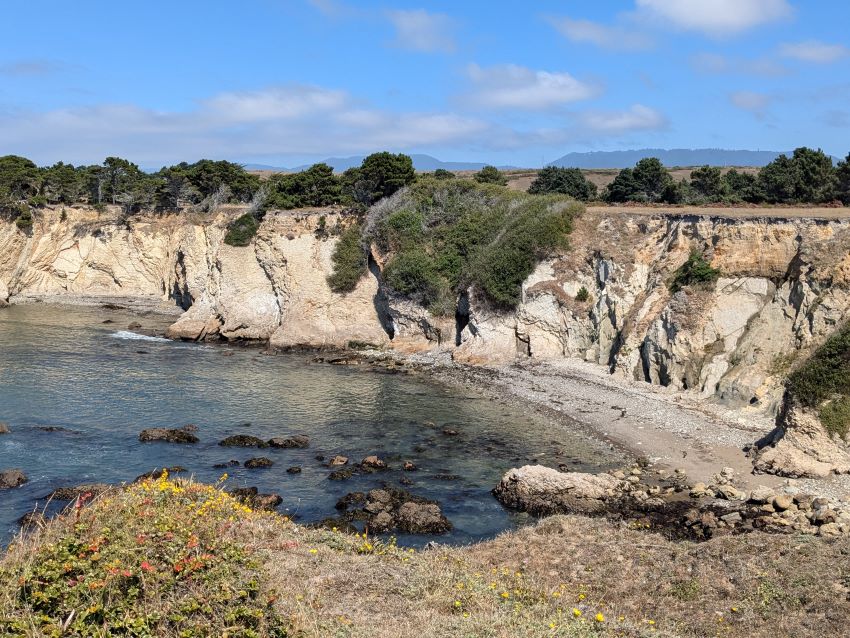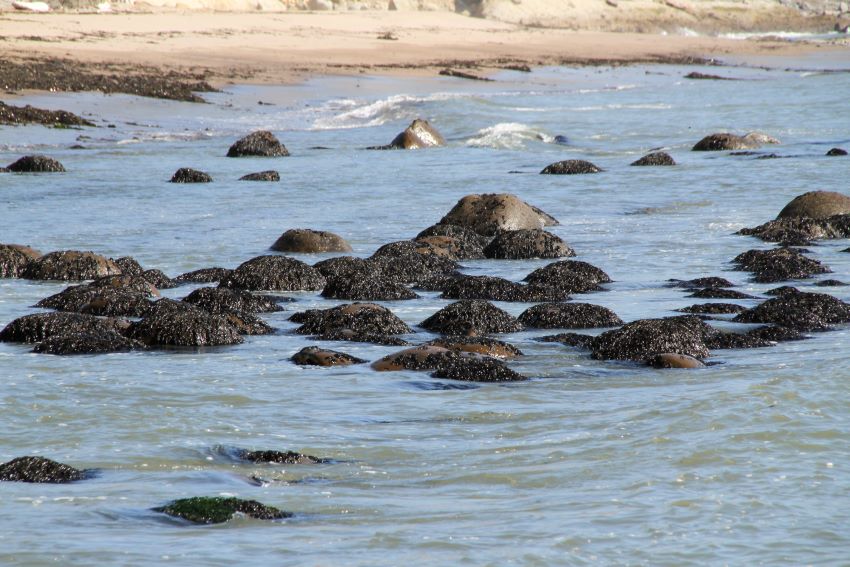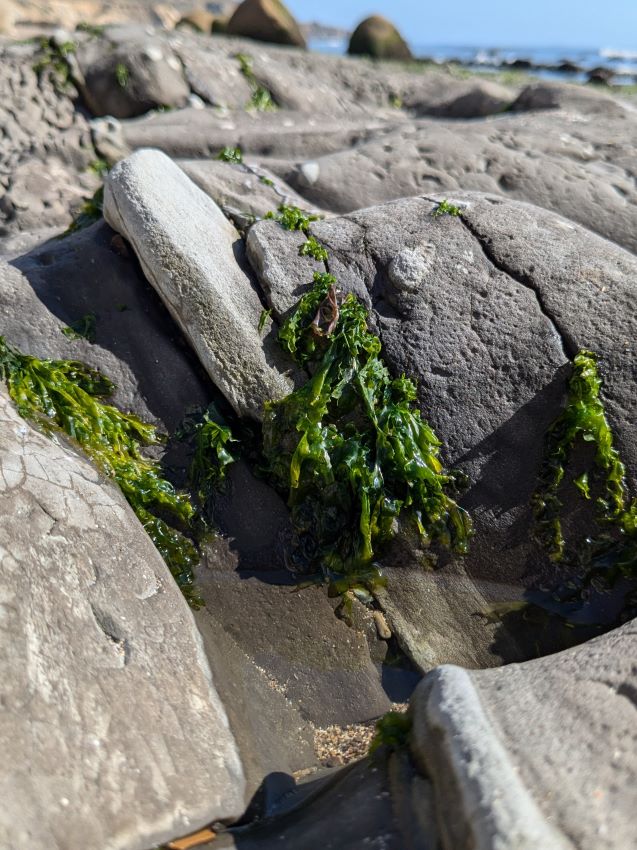While in Gualala, we went up to Point Arena for a leisurely hike along the bluffs of the Point Arena Stornetta Public Lands. This is a particularly scenic section of the Northern California coast with steep bluffs and dramatic coastal shelves. Stornetta was added to the California Coastal National Monument in March 2014. The California Coastal National Monument was established in January 2000 and stretches along the entire coastline of California. I had been at Stornetta a few times before, but always under very grey skies.
It was grey and foggy when we started out this time as well.
But when we left, it looked like this:
We finally were able to experience this incredible place in finer weather. Temperatures were in the 60s - considered warm on our North Coast - and the wind wasn't too wild either. An ideal day to explore this part of the coast.
This is the area where the San Andreas Fault "disappears" into the Pacific Ocean and the geological landscape is fascinating.
Rocky islands were seen further out in the ocean. When we were here in a different season they were teeming with shorebirds raising their young. This time was a different picture.
But no matter what season, the gulls are reliably always there and entertaining us every time. And I never get tired of taking photos of them.
The seals are always there as well, and they are just as entertaining.
I have always liked these "forests" of Sea Palms (Postelsia palmaeformis) that so easily grow on the rocks in the water.
One of my favorite native plants grows in abundance on these cliffs - Coastal Buckwheat (Eriogonum cinereum). I love the suptle pink flowers.
They were growing all over the cliffs.
Talking about the cliffs - they were truly impressive.
In the distance we could see Point Arena Lighthouse, just a couple miles up the coast.
We saw native Seaside Daisies (Erigeron glaucus) and faded pink Sea Thrift which is not native.
I was very happy to see Dudleya farinosa. This particular one is a species native to California (California has 26 species of Dudleya that are native). Unfortunately, Dudleyas in California fell victim to wide spread poaching. Often poaching is associated with white rhinos and shark fins, but plant poaching is actually a very serious problem. Succulents like Dudleya are regularly stolen from wildlands and sold on the black market. Dudleyas were stolen by the thousands from California, worth tens of millions of dollars. In September 2021 California Governor Gavin Newsom signed Assembly Bill 223 into law that provides important new protections for these imperiled native succulents.
In contrast, I was very unhappy to see ice plants, a non-native highly invasive plant. When ice plant etsablishes itself, it forms a thick mat, choking out all other native plants and altering the soil composition of the environment. In the following photo you can see how it crowds out the Coastal Buckwheat.
Then we saw this - we were wondering what it was. We were first thinking "hamster" but somehow it didn't ring right. After doing some research back home I found out what it is and I still get goosebumps!
It's the Point Arena Mountain Beaver. No, I'm not joking! Aplodontia rufa nigra is an endangered species and considered the most primitive living rodents. Mountain beavers are not closely related to true beavers (Castor spp.) and the Point Arena Mountain Beaver is one of seven subspecies of mountain beaver.
Along the coastal trail we came upon a "cave" (for lack of a better word) that the ocean had carved into the cliffs. We walked around it, partly on a very narrow path.
Here you can see what it looks like and where the sea made its way in. It's fair to predict that sometime this "portal" will give in.
Of course like every decent rocky shore there were blowholes and waves crashing against the cliffs...
... and small bays with a good amount of kelp on the rocky beach.
Slowly we made out way back to the trailhead, stopping every now and then to take in the gorgeous views.
It was a wonderful day. Thank you for reading to the end of this very long post.









.jpg)

















.JPG)





.JPG)
























